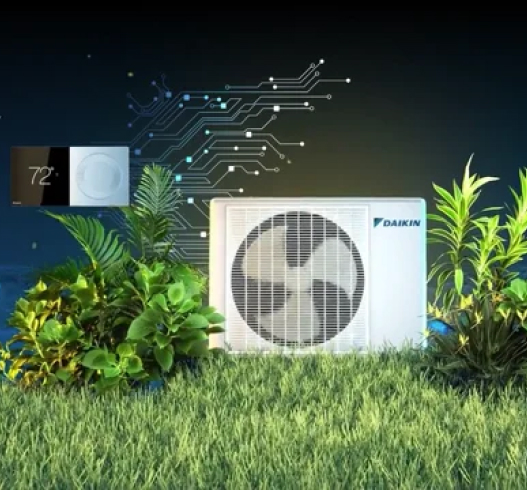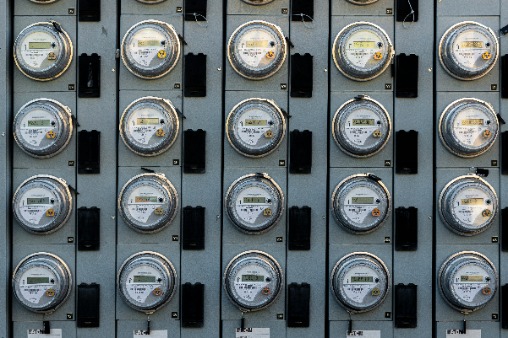Understanding the Parts of a Ductless Mini-Split System

By 2026, the global market for ductless mini-split systems is projected to reach $145 billion.1
Concerns about efficiency, the capability to enjoy customized temperatures in different rooms, and demand for low-cost, flexible installation options are some trends driving interest in ductless mini-splits.
Ductless mini-splits are inherently efficient, as the supply and return ducts of a traditional heating, ventilation, and air conditioning (HVAC) sprawling through attics, garages, and crawl spaces may leak 20-40% of the conditioned air used to heat or cool a home.2
Still, for many homeowners in North America, where traditional central air conditioners and gas furnaces have dominated for decades, ductless mini-splits may seem a bit mysterious.
How do those systems work?
The Ductless Name Says It All
Unlike traditional HVAC units that require a complex network of ducts, a ductless mini-split system is designed to deliver heating or cooling directly into a specific room. Ductwork isn’t needed, freeing up attic or garage space – and opening up the possibilities to heat or cool challenging rooms.
With a ductless mini-split system, a compact outdoor unit, which carriers the compressor, delivers the refrigerant through a slender conduit straight into a room. There, an indoor unit called an evaporator is mounted to a wall, ceiling or floor. That indoor unit uses a blower to distribute, cool or warm air into a room.
Many ductless units are single-zone, meaning they cool or heat one room. However, there are also multi-zone systems, where one outdoor compressor supports several indoor units, creating a ductless network that conditions multiple rooms and even entire houses.
Both types of ductless systems that heat and cool areas use an inverter heat pump at their core. Heat pumps can achieve high energy efficiencies by transferring heat rather than generating heat (like a furnace).
- When air conditioning is needed, heat pumps capture and move heat from indoors to outdoors, cooling the home.
- During the heating season, the process is reversed, extracting heat energy from the outside to warm the home.
While that may seem incredible, some ductless heat pumps, like the Daikin AURORA, are designed to provide comfortable indoor temperatures even in extreme weather conditions, as cold as -13°F or as hot as 115°F, delivering year-round comfort.

A ductless mini-split capable of heating and cooling has three main parts:
- Outdoor Condenser Unit: A unit outside your home.
- Indoor Evaporator Unit: Mounted on a wall, floor, or ceiling inside.
- Conduit: Connects the indoor and outdoor units with refrigerant and electrical lines.
Outdoor Condenser Unit: A compact, rectangular box outside the home contains a compressor unit, condenser coils, and fan. - Compressor: The compressor pressurizes the refrigerant. Its job is to convert the refrigerant from a gas to a liquid and then pump it through refrigerant lines to the indoor unit.
- Condenser coils: This is where the magic happens. Refrigerant is pumped through tightly wound condenser coils throughout the unit. Those seemingly endless loops of coil give the outside air time to either absorb heat from the refrigerant or release heat into the refrigerant.
- Outdoor fan: A fan inside the outdoor unit blows air over the condensing coils, ensuring the air cools or warms sufficiently. An expansion valve allows the high-pressure liquid refrigerant to expand immediately before entering the evaporator unit, further cooling it.
Indoor Evaporator Unit: Usually mounted on a room wall, mini-split evaporator units also come in floor-mounted, suspended-ceiling, and concealed-ceiling versions, fulfilling your design aesthetics for nearly any space.
- Evaporator coils: Inside the evaporator unit, cold refrigerant flows into the evaporator coils, absorbing heat automatically from the surrounding air. This cools your space and causes the refrigerant to evaporate into a gas, carrying heat from the room back outside. The process is reversed to heat your space.
- Blower: To cool your space, a circular blower draws in warm air while blowing cool air back into the room.
- Air filter: Conditioned air runs through an air filter, helping improve indoor air quality by capturing air particles. Usually, these ductless mini-split filters are conveniently washable, which helps save money on filter replacements.
Conduit: A line set connects refrigerant tubing, drain lines, and electric cables between the outdoor and indoor units. (That conduit requires as small as a four-inch hole on the exterior wall.) This line set is how refrigerant gas is transferred from inside the home to the outside compressor.
- Refrigerant lines: Insulated copper tubing carries refrigerant through the system.
- Drain lines: During cooling cycles, all evaporators, including traditional split-system units, produce water from condensation. Drain lines take that condensation outside.
- Electrical lines: One “cool” thing about mini-splits is that you don’t need to re-wire your home. Electrical cables from outside power the indoor evaporator units.
- Communication lines: Sending signals between the indoor and outdoor units, electronic communication lines keep the unit running smoothly to maintain the temperature you desire.
Quiet Convenience
Ductless systems are designed to be user-friendly, with convenient remote controls that make it easy to set the perfect temperature. Some systems even sense when someone enters or leaves the room, and enters into an energy saving mode as needed..
Because of their design, mini-splits may operate at quieter decibel levels than many single-speed central AC systems, indoors and out. On average, ductless mini-splits create 32 decibels of noise – the equivalent of being in a quiet, rural area, according to IAC Acoustics.3
For many residential, commercial, and institutional settings, ductless mini-split systems are hard to beat for efficiency, flexibility, and indoor comfort performance.
1 Markets And Markets, Ductless Heating & Cooling Systems Market, https://www.marketsandmarkets.com/Market-Reports/ductless-heating-cooling-systems-market-108776436.html
2 ASHRAE, Top Ten Things Consumers Should Know About Air Conditioning, https://www.ashrae.org/technical-resources/free-resources/top-ten-things-consumers-should-know-about-air-conditioning
3 IAC Acoustics, Comparative Examples of Noise Levels, https://www.iacacoustics.com/blog-full/comparative-examples-of-noise-levels
In this article
Connect on Social Media
 Follow on Facebook
Follow on Facebook
 Follow on YouTube
Follow on YouTube
 Follow on Instagram
Follow on Instagram
 Follow on X
Follow on X
 Follow on TikTok
Follow on TikTok
 Follow on Pinterest
Follow on Pinterest

Looking for help now?
Enter your zip code to search for Daikin Contractors in your area.
Learn More
Learning Center Content
Stay informed about home comfort technology, when to upgrade, energy efficiency, and reducing your energy bills.





























